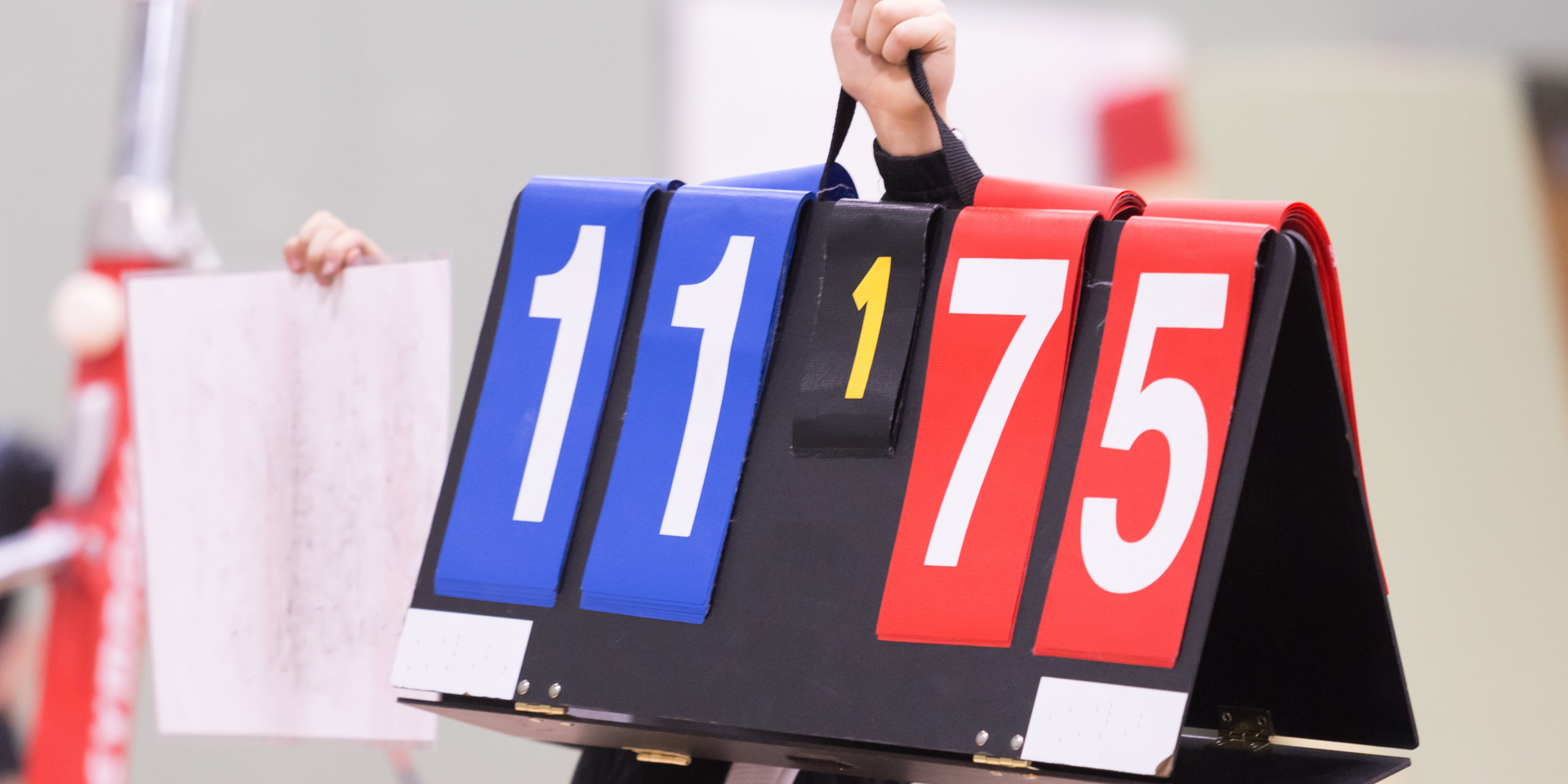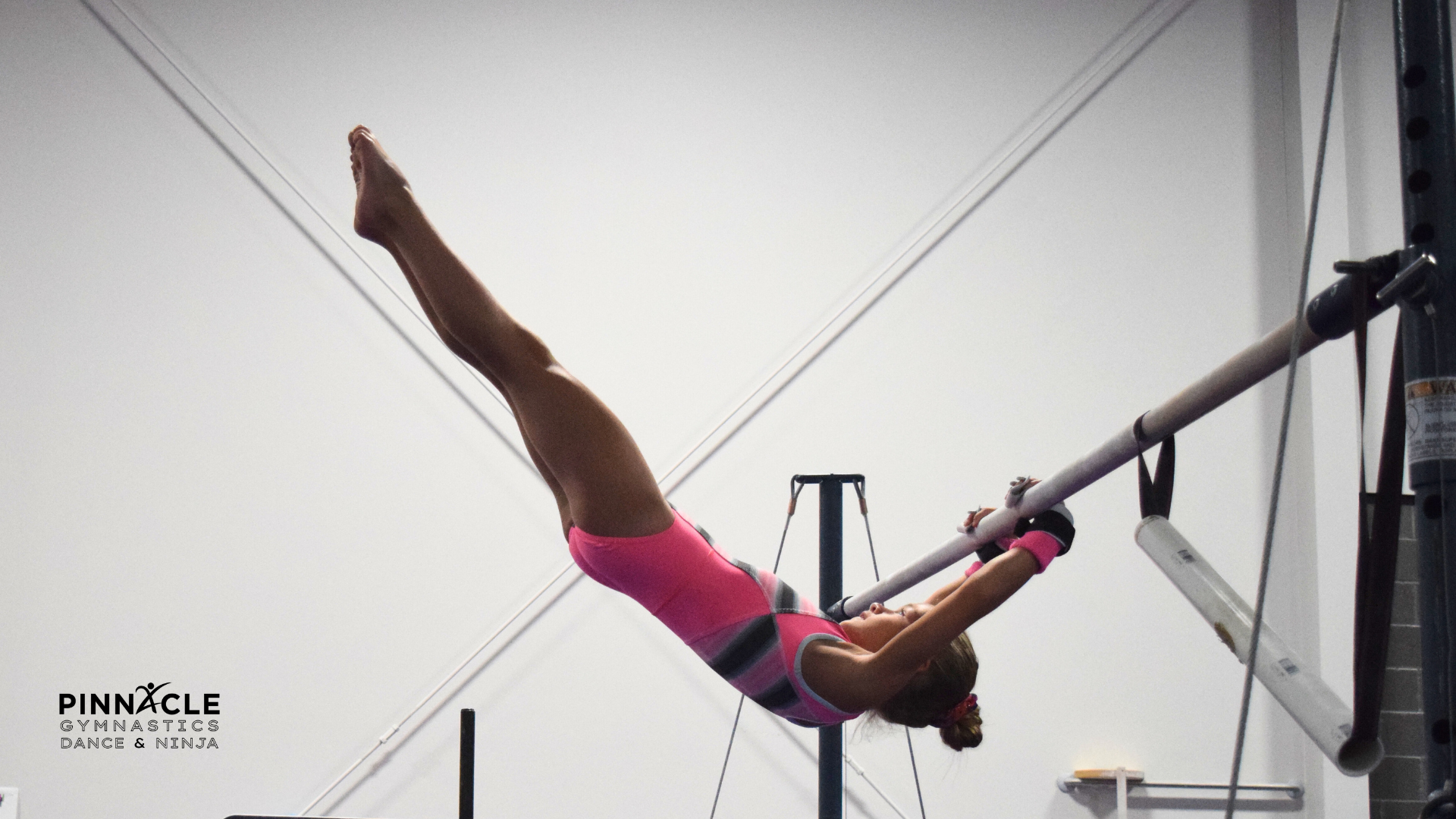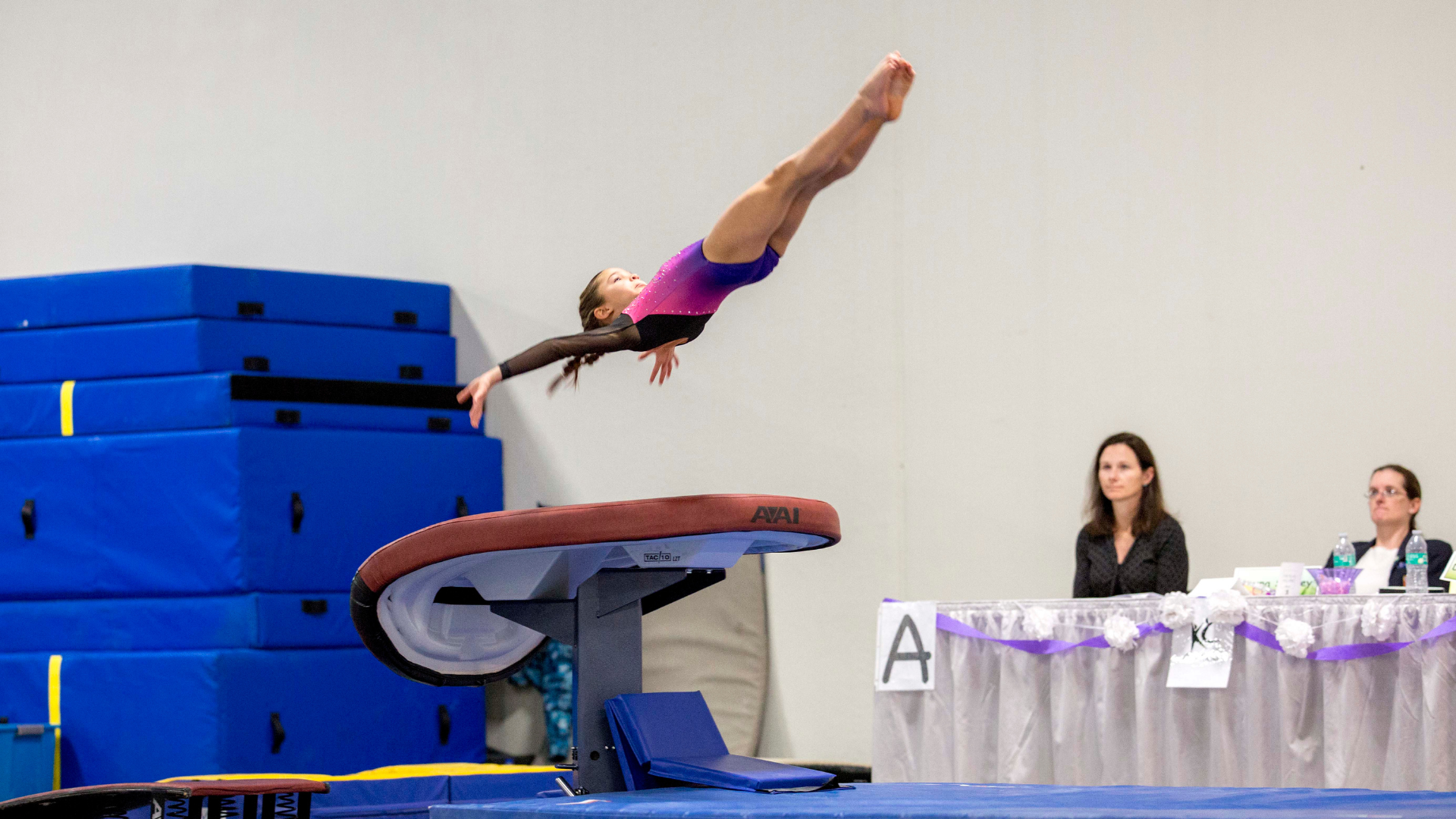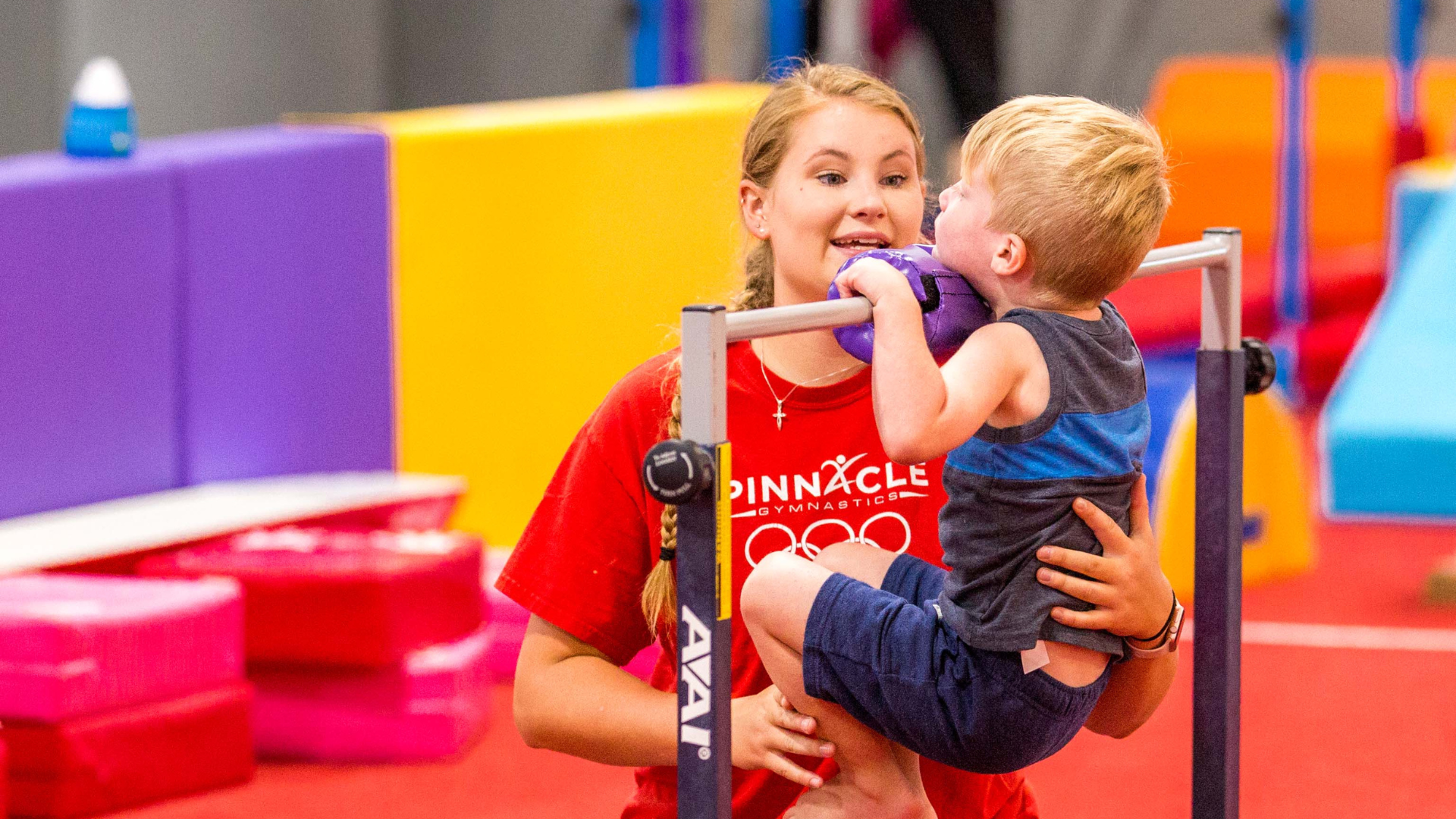Elite Gymnastics Scoring: What Is It?
The days of the perfect 10 in the International Elite world of gymnastics have come and gone. Nadia and Mary Lou will forever remain as the icons that achieved perfection. As the skills gymnasts attempt continue to get harder and harder, the scoring system was modified to reflect and reward those successfully completing a harder repertoire of skills.
In gymnastics, scoring plays a pivotal role in determining the outcome of competitions. Whether you're a gymnast, coach, or fan, understanding how gymnasts are scored in elite competitions is essential. The scoring system can be complex, involving both technical precision and artistic evaluation. Knowing the ins and outs of the scoring system allows athletes to refine their routines and fans to appreciate the level of detail and dedication involved in each performance.
This blog will take you through the technical aspects of elite gymnastics scoring, explaining the key components of the scoring system, how routines are judged, and what makes a perfect score in top-level gymnastics.
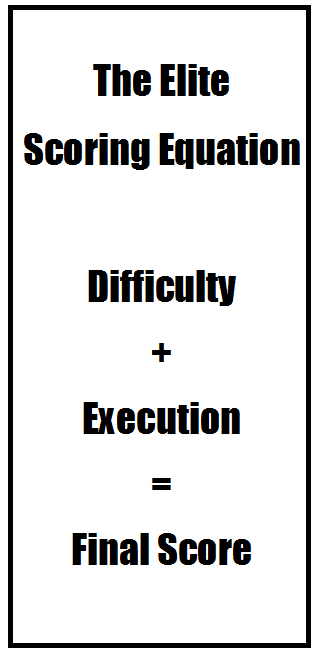
1. The Scoring System: FIG Code of Points
At the highest levels of gymnastics, such as the Olympics and World Championships, the FIG Code of Points (COP) governs the scoring system. This document outlines the rules, criteria, and standards for how gymnasts’ performances are evaluated. The Code of Points is designed by the International Gymnastics Federation (FIG) and is regularly updated to reflect the evolving nature of the sport.
How the Scoring System Works: Two Components
The FIG scoring system is based on two main components: Difficulty and Execution. These two aspects are evaluated separately and then combined to determine the gymnast’s final score.
- Difficulty (D-Score): The D-Score is based on the technical complexity of the routine, reflecting how difficult the skills performed are. Gymnasts receive points for each individual skill they perform, and the difficulty of these skills is assigned a value in the Code of Points. The more complex and advanced the skill, the higher its point value. Additionally, combinations of skills that demonstrate fluidity, originality, or innovative elements may receive bonus points.
- Execution (E-Score): The E-Score is a reflection of how well the gymnast performs the routine. Judges evaluate the execution of each element based on form, technique, and precision. This includes aspects such as body posture, control, timing, and the smoothness of transitions between elements. Any imperfections, such as bent limbs, lack of extension, or instability, result in deductions from the E-Score.
Calculating the Total Score
The final score in elite gymnastics is calculated by adding the D-Score and the E-Score. However, the E-Score starts at a maximum of 10 points and can be deducted for errors. The D-Score is typically higher than the E-Score and can vary greatly depending on the complexity of the routine.
For example, a gymnast who performs a difficult routine with flawless execution could receive a high D-Score for their challenging skills and minimal deductions for form errors, resulting in a high total score. Conversely, a gymnast with a relatively easier routine but who executes it almost perfectly might have a lower D-Score but still score well overall due to fewer deductions in execution.
2. Difficulty Score (D-Score): What Determines It?
The D-Score is a critical factor in elite gymnastics and is composed of several key elements:
Value of Individual Skills
Each skill performed in a gymnast's routine is assigned a value in the Code of Points. These values range from A (easiest) to J (most difficult), and can include flips, twists, jumps, handstands, and other acrobatic elements. The more challenging the skill, the higher its letter grade and corresponding point value.
- A elements (beginner-level skills) are worth 0.1 points.
- B elements (intermediate skills) are worth 0.2 points.
- C elements (advanced skills) are worth 0.3 points.
- D elements (high-level skills) are worth 0.4 points.
- E, F, G, H, I, and J elements become progressively more difficult and increase in value.
- For example, a gymnastic skill like a back handspring might be worth a B (0.2 points), while a more difficult double backflip could be worth a D (0.4 points).
Bonus Points and Skill Combinations
One of the ways gymnasts increase their D-Score is by linking difficult skills together. Certain combinations of skills, such as multiple back handsprings or flips in a row, result in bonus points. For example, connecting a double twist into a layout or performing a difficult mount can add extra difficulty points to the gymnast’s overall score.
This encourages gymnasts to push their limits by combining skills in increasingly innovative ways, and it also adds to the complexity of a routine. Bonus points are awarded when the combination of skills goes beyond a certain level of difficulty.
The Importance of the Routine’s Composition
The D-Score is also influenced by the composition of the routine—meaning how well the gymnast balances different types of skills (e.g., jumps, turns, acrobatic skills). For example, routines are scored higher if they include a good balance of skills that showcase flexibility, strength, balance, and coordination, especially in women’s gymnastics.
Difficulty Range
In high-level gymnastics, especially at elite competitions like the Olympics, the D-Score can easily exceed 6.0 points, and for more advanced routines, can even approach 7.0 or higher depending on the complexity of the elements performed.
3. Execution Score (E-Score): How Precision Impacts Performance
The E-Score, or Execution Score, measures how well a gymnast performs each element of their routine. Judges deduct points from the maximum 10-point score for any technical flaws or errors in form. Some of the most common deductions include:
- Form Issues: Gymnasts are expected to maintain perfect body positions during their routine. For example, if a gymnast has bent arms or legs during a handstand or a leap, they will be deducted.
- Balance Errors: In gymnastics, balance is key—whether on the beam, floor, or during certain skills. A small wobble or loss of control can result in significant deductions.
- Uneven Height or Alignment: A gymnast’s body must be in perfect alignment during many elements, such as jumps, tumbling passes, and handstands. Uneven or unclean movements, like a gymnast leaning too far forward, can result in a deduction.
- Landings: A controlled landing is essential in gymnastics, particularly in elements like vaulting, tumbling, and dismounting. A large step, stumble, or fall results in a significant deduction, typically ranging from 0.3 to 1.0 points.
- Timing Issues: The gymnast’s movements must be executed with the rhythm of the music or the pace of the routine. A loss of timing in the execution of elements, such as a delayed jump or uncoordinated movement, can result in minor deductions.
How Deductions Work
The E-Score begins at 10.0 points, and deductions are applied based on the severity of the errors made during the performance. Deductions can range from 0.1 for minor mistakes (like a small wobble on the balance beam) to 1.0 or more for larger errors, such as a fall or major technical breakdown.
For example, if a gymnast loses balance during a vault landing, the deduction may be around 0.3 points. If a gymnast falls off the balance beam, the deduction might be 1.0 point or more, depending on the severity of the fall and the amount of recovery.
Judging Criteria and the Role of Panel Judges
In elite competitions, there are typically two panels of judges: one for Difficulty and one for Execution. The judges for both panels are highly trained and often former gymnasts themselves. They must be able to assess each routine with precision, and they often use video replay for certain critical elements.
The Role of the Chief Judge
In addition to the Difficulty and Execution judges, there is often a Chief Judge who oversees the entire judging process. The Chief Judge ensures consistency in scoring, resolves disputes, and ensures that the Code of Points is followed correctly.
4. The Perfect 10: Is It Achievable?
The concept of a perfect 10.0 used to be the gold standard in gymnastics, but with the current scoring system, it is nearly impossible to achieve, especially in elite competitions. Given the complexity of skills, the introduction of difficulty bonuses, and the focus on execution, gymnasts today can only achieve scores close to 10.0 with near-perfect performances.
However, it’s important to note that a perfect execution score (a 10.0) is still possible, but this requires an impeccable routine with no deductions. It’s a rare achievement, often seen in gymnasts at the very top of their sport.
For instance, in the 1980s and 1990s, gymnasts like Nadia Comăneci (1976) and Kerri Strug (1996) received perfect 10.0 scores in their routines, marking them as groundbreaking athletes. While the perfect 10 may no longer be the benchmark, the pursuit of near-perfect performances remains central to the sport.
5. Understanding the Deductions: Why Precision Matters
Elite gymnastics is a sport that values precision at every level. Even the smallest mistake can result in a significant deduction. This means that gymnasts are under constant pressure to maintain a flawless level of execution. The precision required in elite gymnastics is what separates the best from the rest.
Key Deduction Areas
- Landing Deductions: Landings are crucial in gymnastics, and any major balance issues or steps taken after a jump or flip result in deductions.
- Stability During Elements: In elements like handstands, freezes, or handstands on apparatus, judges will look for perfect body control. A small wobble or loss of alignment may result in a deduction.
- Transitions: Smooth transitions between elements are important for a seamless routine. Any abrupt or ungraceful transition from one skill to another can lead to minor deductions.
Mastering the Art of Scoring
Understanding how gymnasts are scored at the elite level provides athletes, coaches, and fans with a deeper appreciation for the sport. The combination of Difficulty and Execution scores creates a comprehensive evaluation system that rewards both technical proficiency and artistic presentation. The pursuit of perfect routines in elite gymnastics continues to challenge athletes to elevate the level of the sport, striving for innovation, precision, and creativity.
By breaking down the components of gymnastics scoring, gymnasts can better understand the criteria they need to meet in order to reach their highest potential. The ongoing evolution of skills and the precision required make elite gymnastics one of the most rigorous and rewarding sports in the world.
